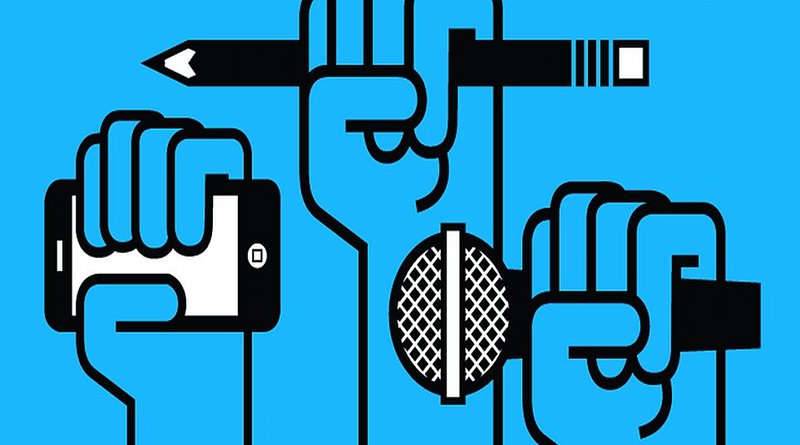US Media As Protagonist For Framing Image Of Different Countries – OpEd
By Haleema Zia*
The United States along with its allies wrought a new global system entrenched in newfangled institutions and international rules after the World War II. This radical global system had a clear focus to regulate the demeanor of different states. The United Nations (UN) emerged as an imperative mainstay to this global system, as it aspired to avert future wars between its member states.
Over time, this system kept on transforming by introduction of set of principles in five strategic expanses of the state behavior including trade order, financial order, maritime order, human rights order, and non-proliferation order. All these principles are acutely engrained as major pillars of the global order, thereby encompassing a series of norms, institutions, and rules. The grander collaboration between developing countries can lead to accelerated development therefore; major goal of the developing countries is to develop such societies that help improve standards of living.
In a globalized world, there is a calamitous need of effective cooperation between different states, people and organizations. People hold robust and transitionally shared anticipations regarding cooperation of interaction partners, especially from the neighboring countries. The cooperation comportment of different states is prejudiced by several interest groups driving the social predilections. These are generally influenced by in-group preferentialism, dissimilarities in affluence, and effects of country combinations.
Different organizations play a substantial role in transnational cooperation in order to achieve communal goals of nations. Because of advanced ICTs (Information and Communication Technologies), majority of people do not have to travel to other countries instead media is playing a vital role in portraying image of other countries in a remarkable fashion. In this era of technology the cooperation between states is not only confined to the development projects and other agreements, but the role of media in image building has become vivacious aspect. This includes role of print, electronic as well as social media as these all are important medium in forming opinions of people. There are many political and social organizations that are running their own media channels for projecting particular opinions regarding burning issues.
Many developing countries are being portrayed in a stereo typical manner because of the bigoted media stories and partial information that is being disseminated. Image of any country can be explained in terms of specific political, social, economic, diplomatic, military and religious background and circumstances. Mass media contributes to the misunderstanding as well as understanding between states, as it is significant factor in constructing or disrupting the image of different societies. Understanding the concept of framing is important to find out how different states and communities are being represented by the U.S. media. Framing is to handpick selected facets of a perceived reality and make them more prominent in a communication text, in such a way to endorse a specific problem definition, moral evaluation, causal interpretation, or treatment recommendation of the item prescribed. Important factors and guiding principles of framing are; natural, social and institutional.
The way U.S. media frames different states keep on changing dramatically from decade to decade. U.S. media gives prominent coverage to social and political events from their ally countries in order to construct a particular perspective. The U.S. media and press follow U.S. government’s policy and guidelines regarding friend and foe states and always support interests of their government while image framing. According to The New York Times, the Washington Post, the Christian Science Monitor, the Wall Street Journal, the Los Angeles Times, and the Chicago Tribute, image framing of Iran and certain other countries were portrayed contrarily in certain time periods by the mainstream press of the United States.
The image framing of different countries depends upon the willingness of the U.S. media to protect interests of those countries according to U.S. foreign policy and state objectives. The U.S. media works to give substantial favorable coverage to its ally countries regarding their economic, political, social and military interests. Therefore, in this era of technology it is important for the developing countries to learn important lessons from the U.S. media in order to benefit their own governments. It is important for the media regulatory authorities and policy makers to align media guidelines with the foreign policy of the state in order to gain a psychological edge by opinion building and achieve political objectives in a result oriented manner.
*Miss Haleema Zia has done MS in Management Sciences from Riphah International University. She has 8 years of working experience with development sector and has also made significant efforts in countering terrorism. She is working as an Independent Researcher in the fields of Management Sciences and Counter Terrorism to build significant connotation between the two fields. She can be accessed through [email protected].

